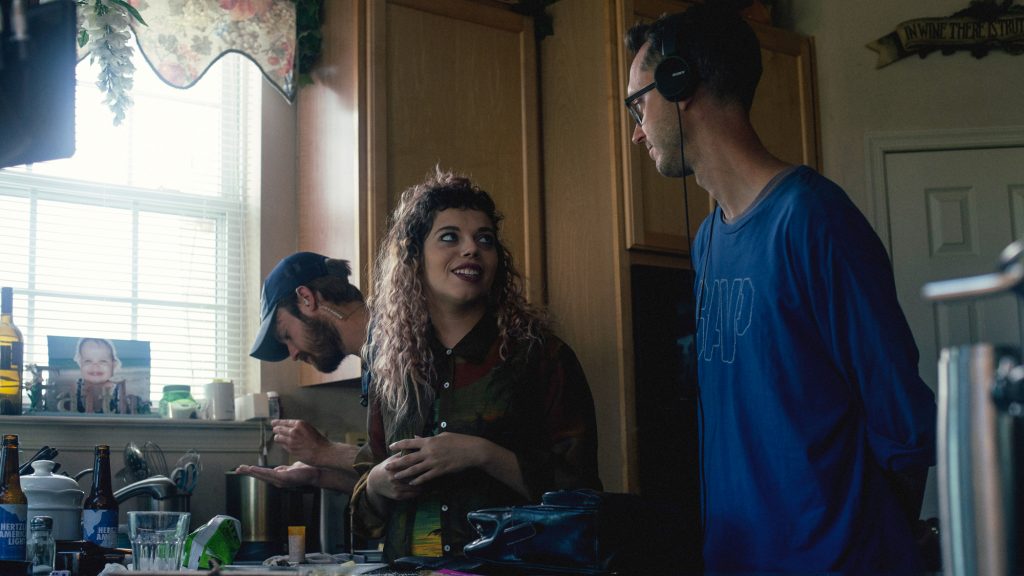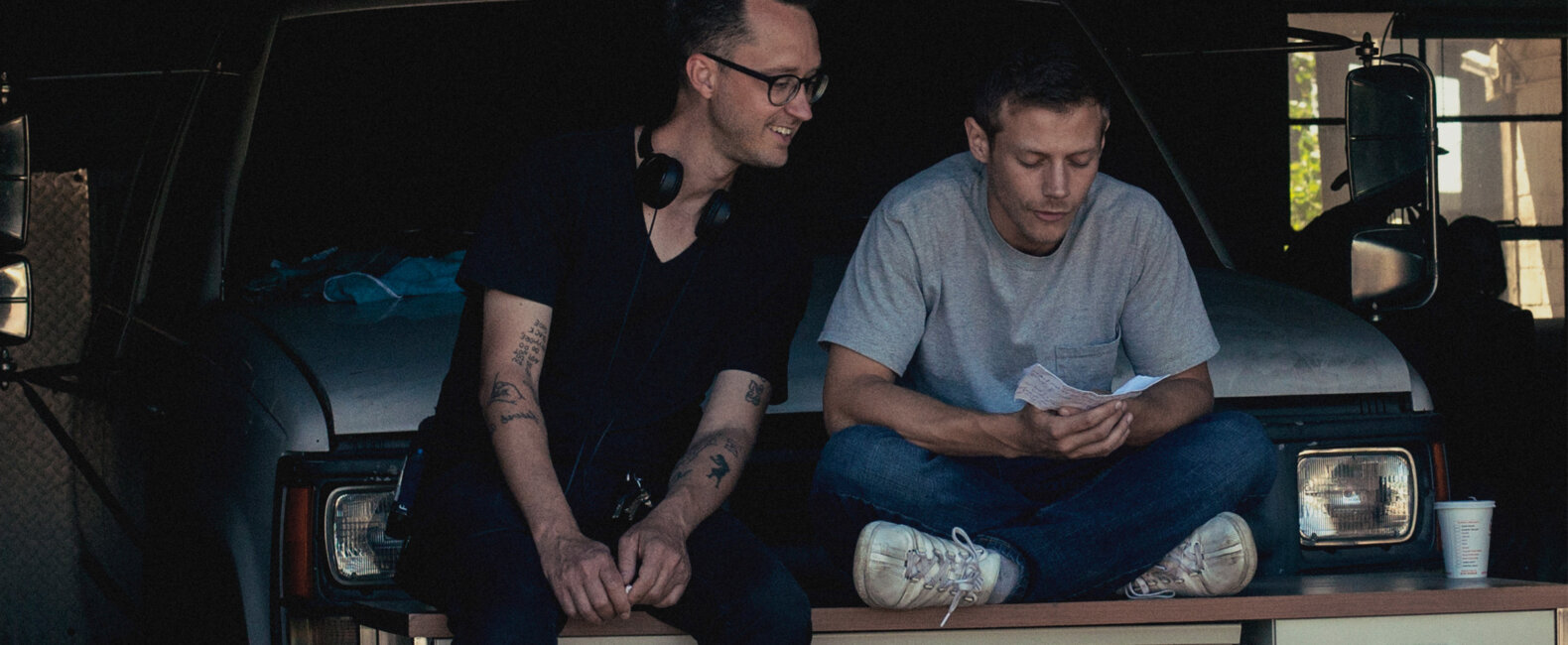Matthew Porterfield, a 39-year-old filmmaker from Baltimore, Maryland, has written and directed four feature films, including Hamilton, Putty Hill, I Used to Be Darker, and the soon-to-be-released Sollers Point. His work has been screened at acclaimed festivals such as Sundance, SXSW, and the Berlinale. And in 2010 he was named one of Filmmaker Magazine’s 25 New Faces of Independent Film. It’s an impressive CV for any filmmaker, let alone one who claims, for the most part, to lack ambition.
“I wasn’t very ambitious in my twenties,” Matthew told us. “I was just open to opportunities. Even to this day I’m not somebody who has a clear plan for the future. I live very hand-to-mouth, as an artist and as a human. Project to project. I never have five script ideas strung out. I don’t have a five-year plan.”
In many ways, Matthew’s approach to life is reflected in the characters in his films. They wander around. Lack direction. Lack desire. Make decisions in the moment. Make the wrong decisions in the moment. Behave like…real people. “Only in movies do people get what they want,” Matthew says. “And I don’t want to give it to them.”
We talked to Matthew about screenwriting, filmmaking, alternative narratives, and his unconventional education in the art house cinemas of New York.

What makes a good ending?
I really struggle with endings. To me, a successful ending carries the audience into the future. My films don’t have a lot of closure. I like open-ended endings that keep you dreaming. You wonder about the next 25 years of the characters’ lives. But at the same time, a good ending must also reflect back on everything you’ve just seen. It’s very hard. A lot of my scripts don’t have endings. At some point, we just leave the characters and the world. We walk away from the screen, but the story continues.
What makes a film good?
For me, it’s surprise. I want to be surprised — it’s that simple. I’m not surprised enough in movies. But that’s always what I’m looking for.
How do you infuse surprise into your films?
I think about writing like a Choose Your Own Adventure book. I loved those, and I think I accidentally learned something from them. When I’m screenwriting and I get to the end of a scene, I look at the decisions from the character’s point of view. I stop thinking as the screenwriter. I stop wondering where I should take the story, and I think about all the places the character could go next. Explore all of those paths. Some of them are crazy, but I’m like, Whoa, this works. So I try out all those things until I know that, no question, this is what happens next. It will almost always be surprising.
Another thing I think about a lot is the impact of scene transitions. Most of my films are cut pretty much sequentially. That’s because when I’m writing, I put so much time into thinking about the impact of each cut. Something you’ll notice in my films is they’re mostly straight cuts. Few transition shots. I think good filmmaking is when you can cut hard from one scene to another. That’s all I did in my first film, Hamilton, and it’s all I did in my new film, Sollers Point. The transitions can be powerful. They create new associations. They create surprise.
How did you learn filmmaking?
I went to NYU to study psychology, but during my second year I transferred into the film program. In a lot of ways, though, my real film education came through my close friend, Jordan, who was a real cinephile. He turned me on to all of these places in New York that were programming interesting films. Many of them still exist. Anthology Film Archives. Walter Reed. Lincoln Center. MoMA. We started going to movies all the time. My film education was the art house cinemas in New York. I ended up dropping out of NYU Film School after a couple years. I took a leave of absence and never went back.
What’d you do?
I taught kindergarten for the next four years. I wasn’t very ambitious in my twenties. I was just open to opportunities. Even to this day I’m not somebody who has a clear plan for the future. I live very hand-to-mouth, as an artist and as a human. Project to project. I never have five script ideas strung out. I don’t have a five-year plan. I don’t know how sustainable that is, but it’s how I feel comfortable. I’ve made four indie features. But I have some peers my age — or younger — who are working in Hollywood now. So there is definitely something to be said for ambition in this industry. But it doesn’t feel natural to me.
A lot of your films are about protagonists who lack ambition, if they include a protagonist at all. Does your approach to life affect your approach to storytelling?
What interests me is how to structure narratives in ways that oppose or subvert mainstream narrative design, which is traditionally just an exercise of one character’s will over the course of an hour or two. Dominant narrative is somebody wants something; somebody else doesn’t want them to have it. It’s conflict theory. But I’m not interested in willful protagonists. I want to watch people who are engaging in life and making decisions in the moment, who don’t necessarily know what they want.

If you look at all of my films, the characters — in a grand sense — don’t know what they want. They don’t know how to react in every situation, which can frustrate certain audiences who are used to willful protagonists. But I think the exercise of will is a dangerous thing. I don’t like it in life. And I don’t believe it needs to exist in movies either. We rarely get what we want. Only in movies do people get what they want. And I don’t want to give it to them.
It’s funny though. I say all this, but as an artist you have to be willful in a lot of ways. I can say I’m not ambitious, but it takes a lot of will to make a film. I really have to push hard to get these things made.
You don’t stumble into a feature film.
No. It doesn’t happen that way, unfortunately.
So in a film where there isn’t a willful protagonist, how do you keep things moving forward? How do you maintain tension?
The characters should captivate you. The place should captivate you. And then there is an accumulation of knowledge and information. The audience is experiencing something. They’re putting the pieces together. You ask for participation from the audience, and then hopefully their interest will hold the piece together because you’re giving them evocative spaces and people to look at. Their interest is what ends up holding everything together.
What makes something interesting?
For me, it’s people and places — physical environments. Those things are interesting when they contain some mystery. When you meet someone and feel like they have a rich interior life. When you’re in a place that you feel has a rich history. People and places are alike in that way. They’re evocative. The crazy thing about film is that it deals with a world of surfaces. You’re only ever dealing with surfaces. But when you can evoke the depth below that surface, that’s when things get interesting.


















































































